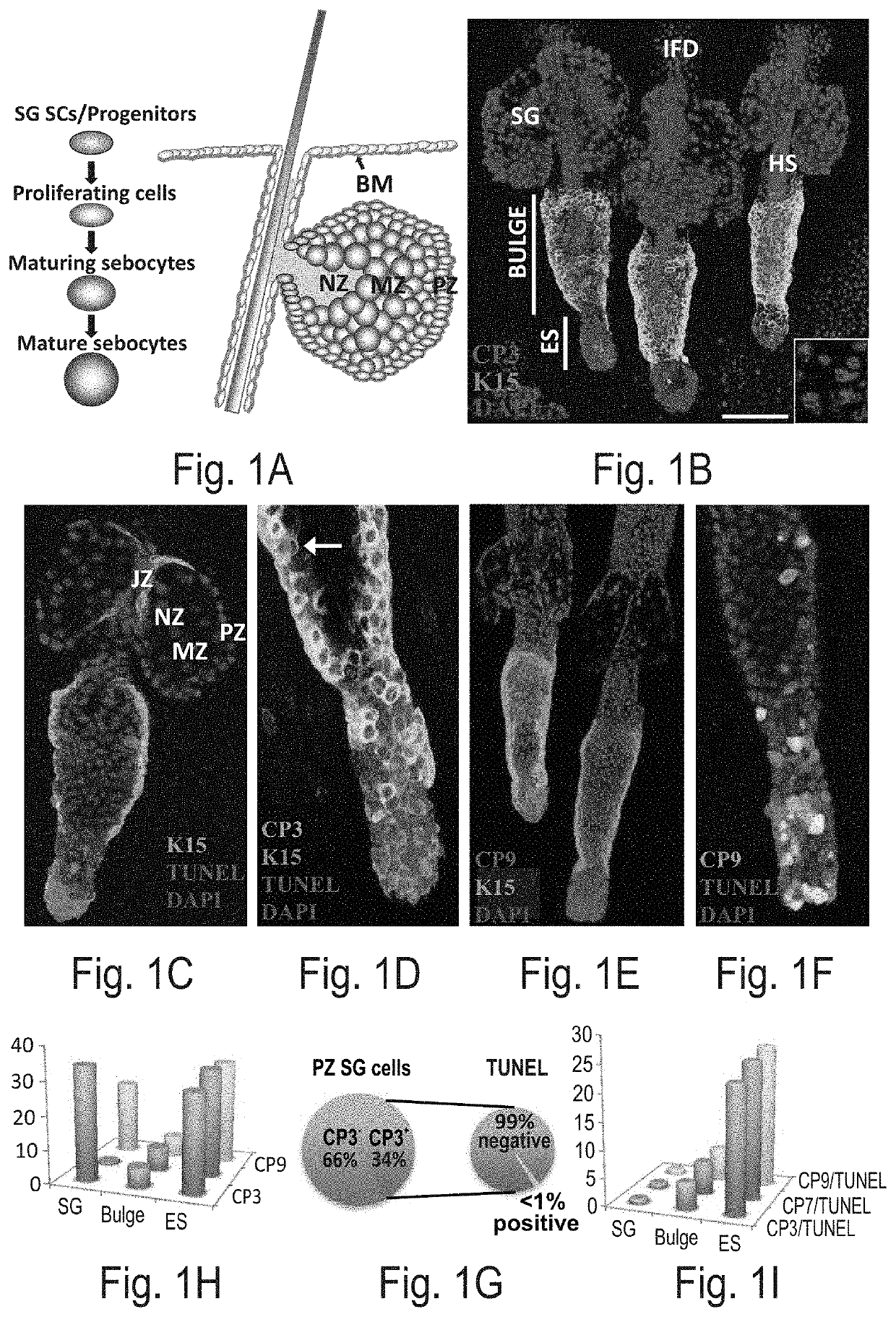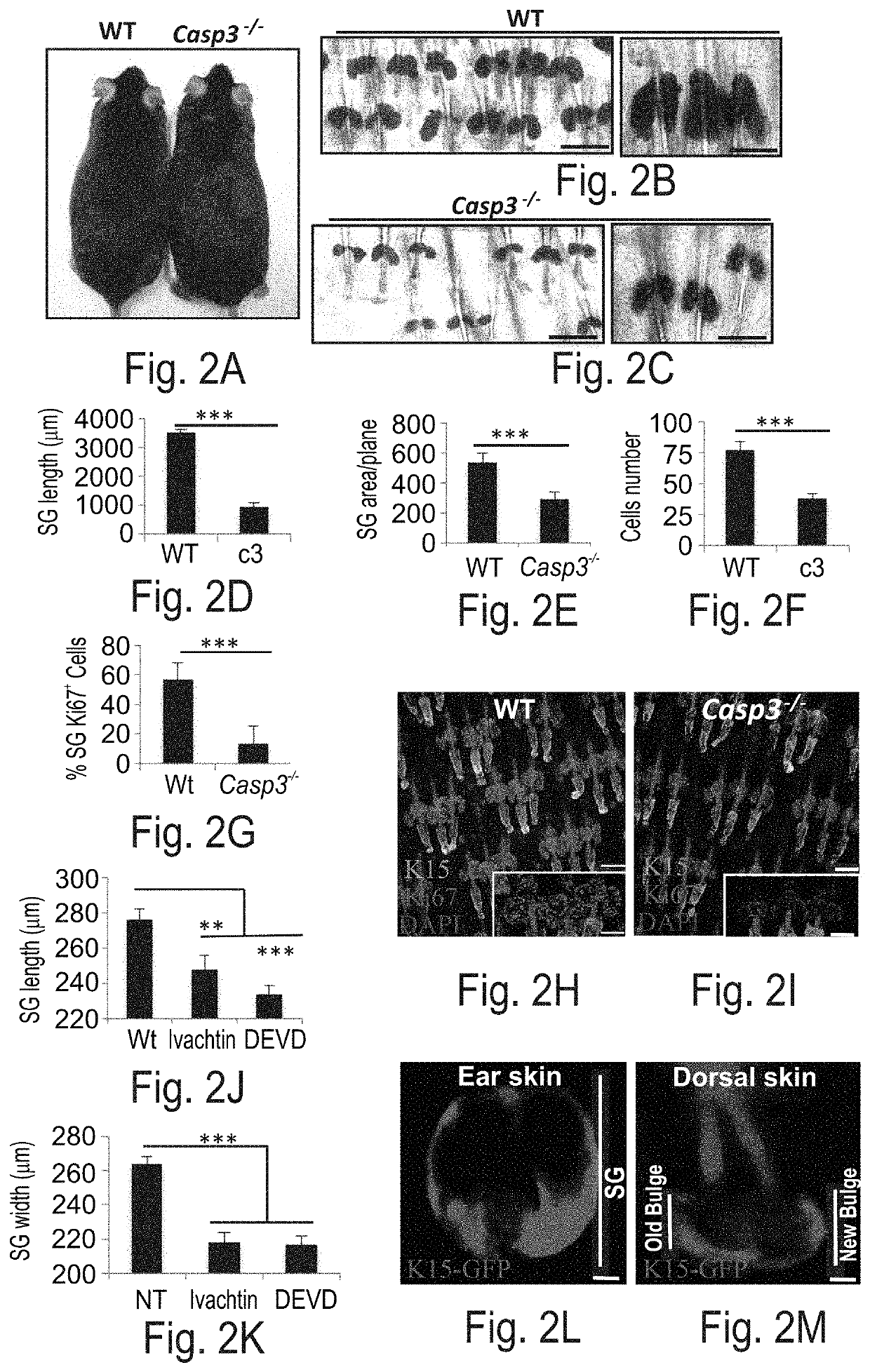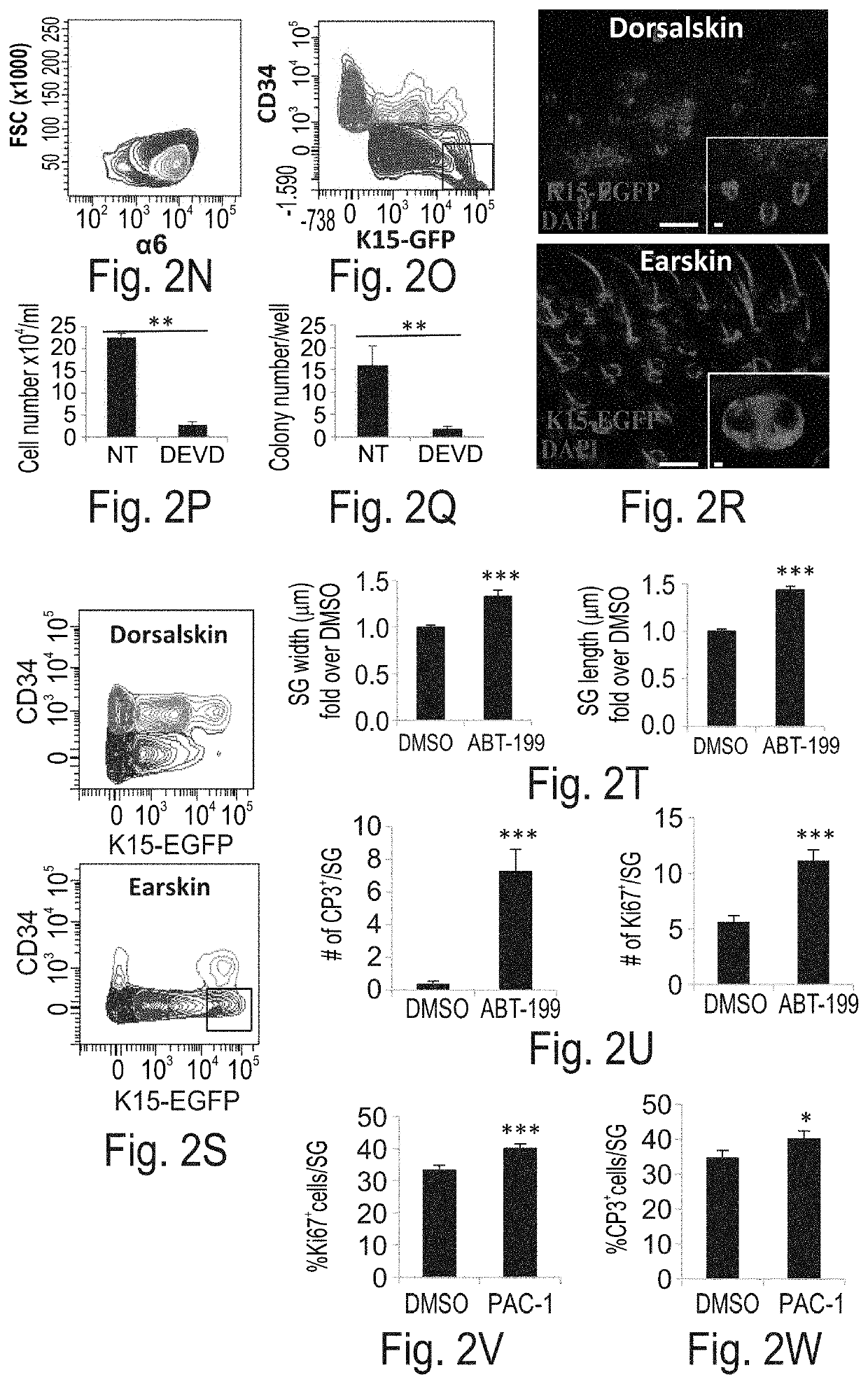Use of caspase-3 inhibitors and caspase-3 activators in the manufacture of medicament for treating cancer and wound healing
- Summary
- Abstract
- Description
- Claims
- Application Information
AI Technical Summary
Benefits of technology
Problems solved by technology
Method used
Image
Examples
example 1
Caspase-3 is Activated in the Sebocyte Gland but Does Not Result in Execution of Apoptosis
[0184]Experimental Results
[0185]Caspase-3 does not instruct sebocyte elimination—The present inventors have utilized the mouse tailskin as a model and employed an antibody specific for the activated and cleaved version of Caspase-3. Three distinct locations were detected in which cells were positively marked (CP3+) along the pilosebaceous unit: (I) the HF bulge, (II) the catagenic HF epithelial strand (ES) and (III) the SGPZ (FIG. 1B). Both CP3+K15+ HF stem cells (HFSCs) and catagenic ES keratinocytes underwent apoptosis as evident by TUNEL staining and apoptotic morphology (FIGS. 1B-D). Surprisingly, although cleaved Caspase-3 was highly expressed in a large number of cells along the SGPZ (34%) it did not instruct cellular elimination (FIG. 1B, FIG. 1C, and FIGS. 1H-I). This was evident as only a minor fraction SGPZ CP3+ sebocytes were positive for TUNEL (<1%, 0.5±0.5%) and did not display any...
example 2
Caspase-3 Regulates Sebaceous Gland Size and Cell Proliferation
[0188]Experimental Results
[0189]Caspase-3 regulates sebaceous gland size and cell proliferation—Given that Caspase-3 is activated in the SG but does not result in execution of apoptosis, the present inventors next sought out to examine the non-apoptotic function of Caspase-3. Employing Caspase-3-null mice (Casp3− / −) the present inventors first noticed that the fur of Casp3− / − mice appeared less glossy than control wild-type (WT) littermates (FIG. 2A). Examination of Casp3− / − SGs, revealed that they are significantly smaller in comparison to control (FIGS. 2B-E). The area (per plane) of the Casp3− / − SGs was approximately 25% of WT and the length of the SG was significantly shorter (FIGS. 2B-C and FIGS. 2D-E). In parallel, the fur of Casp3− / − appeared less lustrous than control WT littermates (FIG. 7J). Of note, Casp3− / − SGs were positively stained with the Oil red O dye indicating that the sebocyte differentiation program...
example 3
Caspase-3 Regulates The Activation of YAP
[0196]YAP, the transcriptional co-activator of the Hippo pathway, is known to have a critical role in the regulation of organ size, while impaired regulation of its activity has been found lead to massive overgrowth of tissues (24-26). In the skin, YAP has been found to play an important role in regulating epidermal proliferation acting downstream of alpha-catenin (27-29). Since inhibition of Caspase-3 affected both proliferation and organ size the present inventors hypothesized that it might regulate YAP activity.
[0197]Experimental Results
[0198]Caspase-3 affects YAP localization in the cell—Conducting immunofluorescent staining for YAP, the present inventors found that in approximately 45% of control SGPZ cells, YAP is located in the nucleus (FIGS. 3A-C). As expected in many proliferating SGPZ cells the present inventors could detect an overlap between YAP and Ki67 while in the terminally differentiated sebocytes YAP was retained outside the...
PUM
| Property | Measurement | Unit |
|---|---|---|
| Area | aaaaa | aaaaa |
| Chemotherapeutic properties | aaaaa | aaaaa |
Abstract
Description
Claims
Application Information
 Login to View More
Login to View More - R&D
- Intellectual Property
- Life Sciences
- Materials
- Tech Scout
- Unparalleled Data Quality
- Higher Quality Content
- 60% Fewer Hallucinations
Browse by: Latest US Patents, China's latest patents, Technical Efficacy Thesaurus, Application Domain, Technology Topic, Popular Technical Reports.
© 2025 PatSnap. All rights reserved.Legal|Privacy policy|Modern Slavery Act Transparency Statement|Sitemap|About US| Contact US: help@patsnap.com



